The Next Generation of Builders Begins With the Current Generation: Reach Out

The year was 1995. Redwood High School, California. Standing at the head of the classroom looking out at 25 eager faces were Joe Downey and me, two contractors with 50 years of building experience between us. There was a hush in the evening air. The students were seated respectfully before the two seasoned professionals, anxiously awaiting their direction. Joe leaned close to me and whispered out of the corner of his mouth, “What the hell do we do now?”
The following story is an account of how Joe and I started a construction technology class.
Good help was hard to find
By 1995, my business partner, Bill Bailey, and I had been running Arrow Construction in Marin County, Calif., for 13 years. We were frustrated by the difficulty in finding young people who had a desire to seek a career in the building trades. I paid a visit to a local high-school wood shop and observed the instructor holding up a 2×6 and telling his bored students, “Now this is a 2×4.”
The time-honored tradition of apprenticeship had lost its draw for young folks, and although Joe and I had learned our skills from many older craftsmen who had taken the time and effort to teach us, there were no young new recruits into the trades to whom we could pass on our knowledge. We were both frustrated by the feeling of wanting to help but having no one there eager to learn. We knew the joy of building and the exhilaration you feel at the end of a day when you turn around and look and say, “Dang, I built that today!”
Wood shops were closing down, and the administrators were turning the shop spaces into computer labs. I saw a need to preserve wood shops and stimulate interest by making the curriculum structured toward more practical applications, like teaching real-world building skills.
An idea is born
My first step was to visit my friend Pete Arrigoni at the Marin County Builders’ Exchange. Pete was the director of the exchange and had been a supervisor in Marin County. He was one of the most respected citizens of this county. I knew that if I could get his support, he could make any plan successful. I met him in his office, and he told me, “I have someone you should talk to.” He picked up the phone and called Joe Downey. Joe was a successful local general-building contractor. He had the same feelings about shop classes that I had, and since his kids had just left the nest, he was in a good position to apply for the job of shop teacher at Redwood High School in Larkspur, Calif. He had acquired his teaching credential 25 years earlier while in the Peace Corps. After Joe got hired as a shop teacher, we went to work on a plan to start a class where the students could get practical building skills. Pete paved the way by introducing us to the Marin County superintendent of schools, Mary Jane Burke. She enthusiastically supported our plan, so we were able to team up with the Marin County Builders’ Exchange and a branch of the school organization called the Regional Occupational Program.
We decided to hold the class one day a week, from 5 p.m. to 9 p.m. The students would have classroom study as well as hands-on building outside in the fenced-in yard. Because the fall-semester weather would be too cold to work outside, we decided to hold the class in the spring semester. To find students for this unique class, we advertised in the local newspaper. Joe and I polished our dog-and-pony show and went around to the local high schools to give talks to the students about the program. Joe had made up a catchy brochure, and we had interested students sign up on the spot. Students from all of the high schools in the the county were eligible to take the class.
[[[PAGE]]]
Joe made arrangements with the school administrators so that the students could get five units of credit for completing the class. We enlisted local lumberyards to donate tools and wood and to pass on our brochures to contractors who might have employees interested in taking the class.
It took a tremendous amount of effort to start an entirely new program teamed up with the public school and the Builders’ Exchange. Coordinating with all the agencies and lumberyards took a lot of time. Joe was busy with developing his teaching skills, and I was a full-time contractor with teenagers in school. That first class was a steep learning curve for us. We realized that to keep control of the students and maintain their interest, an instructor could not have more than six students. We harassed, cajoled, begged, and bullied two local contractors into helping us teach that first class.
Boys, girls, and adults came looking for knowledge
Among the first 25 students were four adults and three female high school students. This ratio stayed pretty much the same throughout the 10 years I worked with the program. Teenage boys are moderately manageable if you can keep them physically active and they can make a lot of noise, so the six-to-one student-teacher ratio seemed to work well.
Joe started an education committee at the Builders’ Exchange. Every month we would meet with school administrators and Builders’ Exchange members to share ideas and make decisions about curriculum. We invited shop teachers from the seven other high schools in the district to contribute ideas and and pass on word about the class to their students.
At the end of the first class, in the spring semester of 1995, we were able to take a breath and assess where we would go from there. The following year we enlisted the help of four contractors. Joe was paid by the high school as a shop instructor, but the other instructors and I received a modest stipend from the Builders’ Exchange. We started the class with the students sitting around on shop tables. Joe printed out a series of safety sheets, and we began by emphasizing safety. We then impressed on the kids that they would behave in this class as though they were employees. I will never forget the look on the face of the first misbehaving student when we informed him that he had been fired and could not return to class.
We passed out printed sheets describing the “tools of the day.” The students were required to draw a picture and write a description of three tools they were to learn about during that class period. They took skill and safety tests at the end of each month.
Because the class consisted of about 80% boys, we were very conscious of the “squirm factor”—too much sitting in chairs listening to instructors. When it was time to get physical, we would break up into assigned groups and start actual building. Often we would start the semester by having each group make a doghouse. We would draw it to scale and build it as our first project. We then advanced to building portable sheds, usually 120 sq. ft. Each semester we built two buildings with many of the components that would go into building a house.
Our projects included storage buildings for homeless shelters, an office for a senior center, and snack shacks for school athletic events. To help move most of the buildings, Sun Iron, a very helpful steel fabricating company, donated a crane truck and flatbed truck. Some were moved by an automobile-moving truck.
Above and beyond carpentry
We would invite representatives from the various trades to talk about their fields and give demonstrations. Plumbers, electricians, architects, and sheet-metal experts gave instructions. Painters, roofers, and shinglers worked with the kids during that phase of the small building construction.
I talked many into working some weekends with me for Rebuilding Together and Habitat for Humanity, telling them it would look good on their résumés.
[[[PAGE]]]
We devised a plan to obtain work for students on job sites during the summer. Joe worked with the school administrators so the students could earn five units of credit for working six weeks during the summer. They would be actual employees and need to make a real contribution on the job site. We got local contractors involved by holding a barbeque four times a semester at the class site. We invited between 10 and 15 contractors to meet the kids. We took a poll of the students interested in summer construction jobs. About 25% would raise their hands. The next week, after we told their parents of the summer employment plan, 70% of the kids signed up.
More important skills to learn: How to get a job
We coached the students on how to introduce themselves to the visiting contractors, and several members of local Rotary Clubs volunteered to conduct mock interviews. We had the students fill in cards with their names and phone numbers to present to the contractors. After the barbeque, the contractors would watch the students as they returned to work on their class project and pick out the ones they wanted to hire. Of course, my construction company would get the pick of the litter. During the summer, the instructors would visit the job sites once a week to make sure the students were in a safe environment and were performing satisfactorily.
At the end of the semester we would hold a graduation ceremony at the site of one of the buildings we donated. Dignitaries would cut the ribbon, and the students would get certificates of completion. The education committee gave out scholarship money to our students who were going on to study some facet of construction in college. The most outstanding student got the James Remes Scholarship of $3000, in honor of a construction technology graduate who died in a car crash while studying engineering at U.C. San Diego. His parents presented the award at the graduation ceremony.
Ten years later, the construction technology class was going strong, with an impressive history of success. Approximately 500 students had smelled the scent of freshly cut fir, recognized the sound of a circular saw, and learned that a “gnat’s ass” is less than 1/16 of an inch. A second class was formed at Novato High School.
The next chapter
Fast-forward a few years to the day that my wife and I woke up to the silence of an empty nest. We looked to the left, looked to the right—no kids in sight. So we made a run for it. We moved to Bisbee, Ariz., an old mining town/artist community in the Arizona high desert. Now I teach furniture building to women in a residential rehab center, but that’s another story.
If you are interested in starting a vocational education program, let’s talk about it.
Fine Homebuilding Recommended Products
Fine Homebuilding receives a commission for items purchased through links on this site, including Amazon Associates and other affiliate advertising programs.

Affordable IR Camera

Reliable Crimp Connectors

8067 All-Weather Flashing Tape

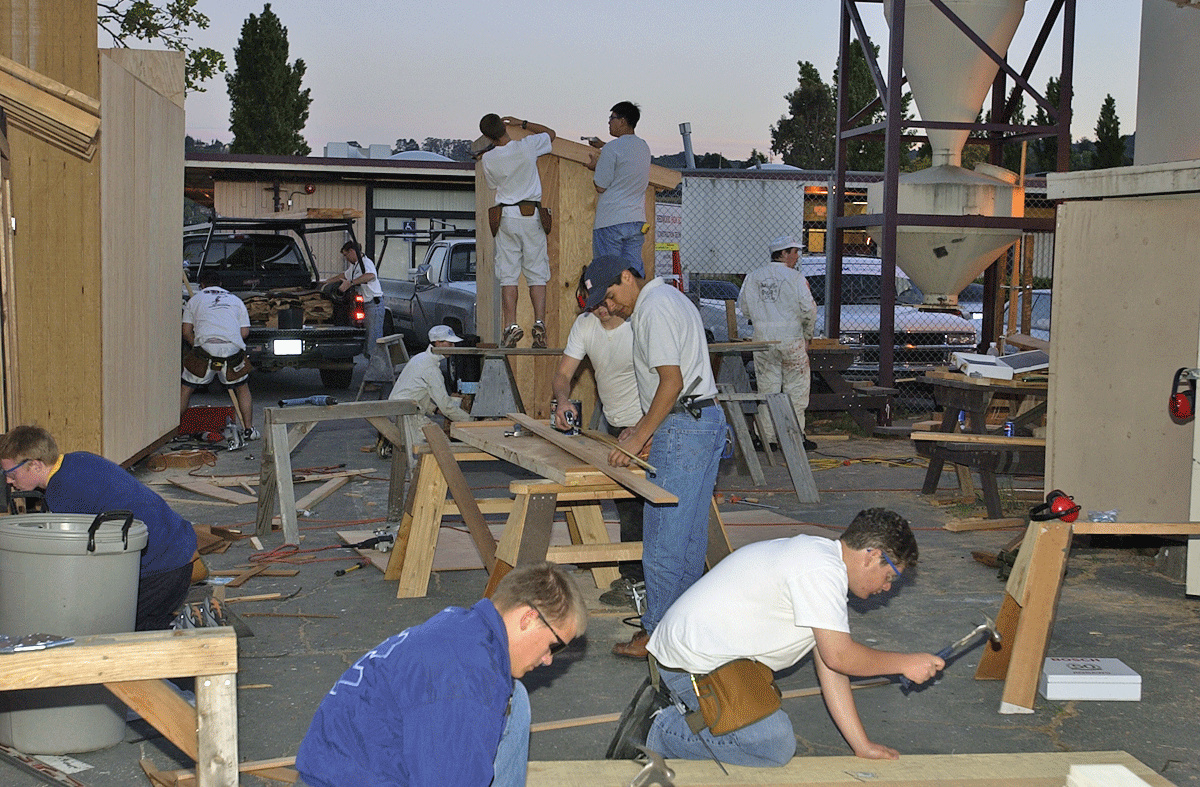


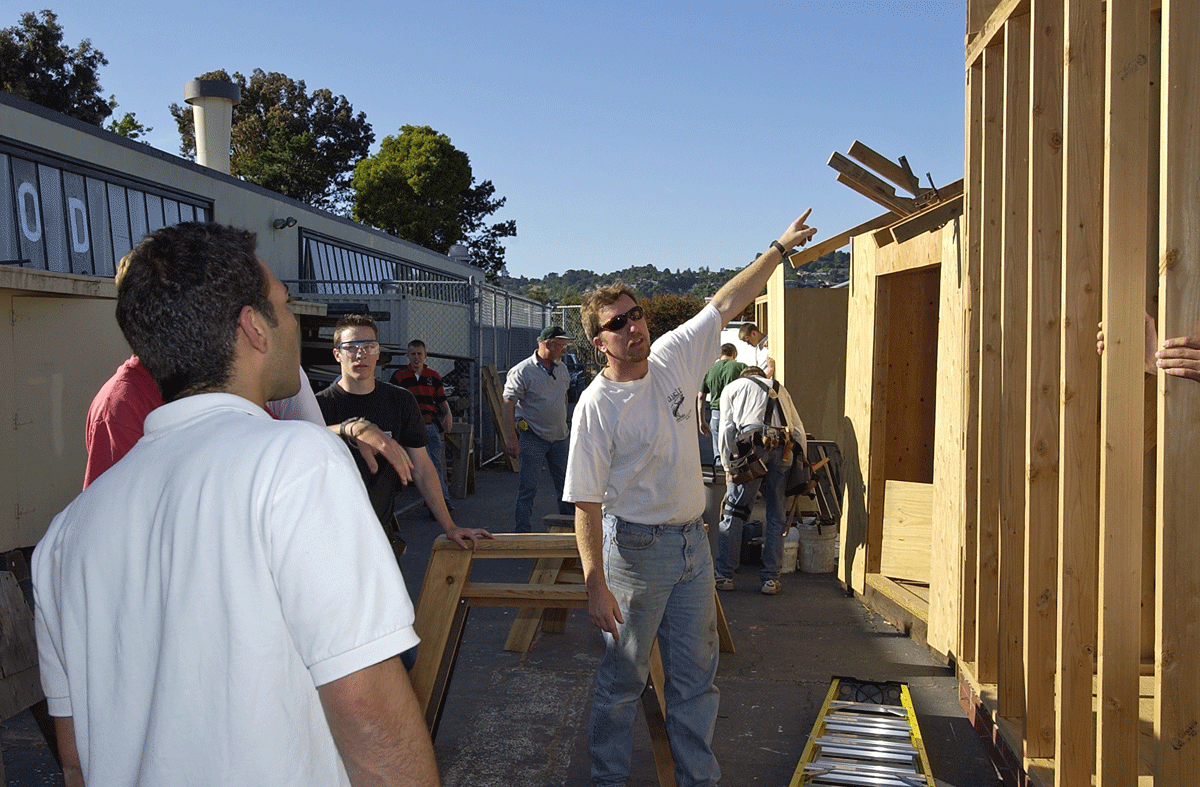
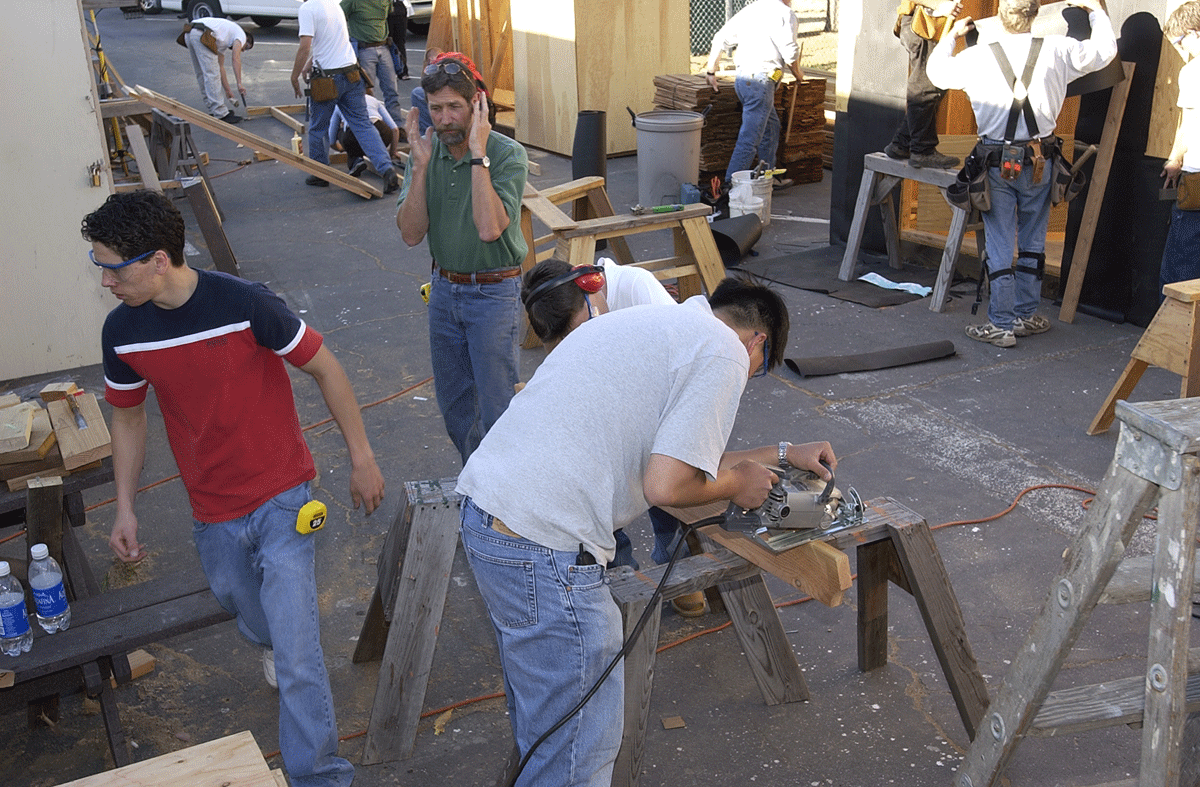


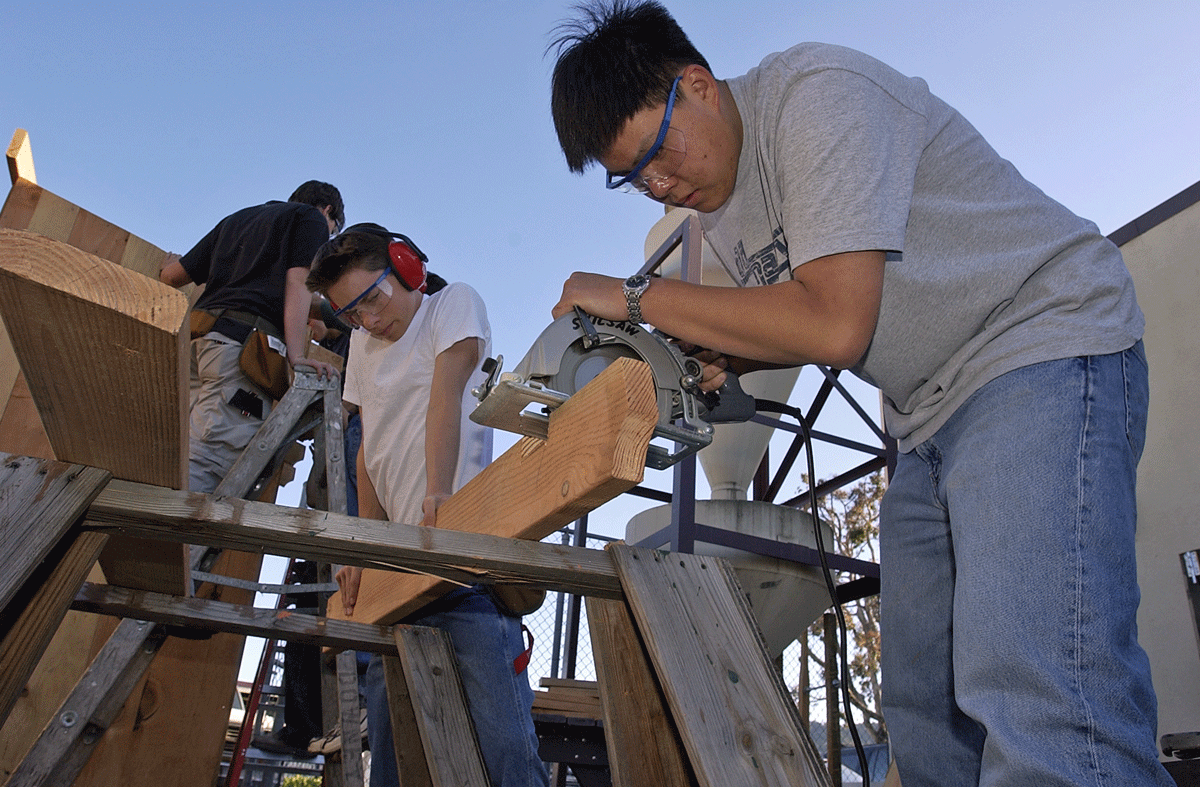
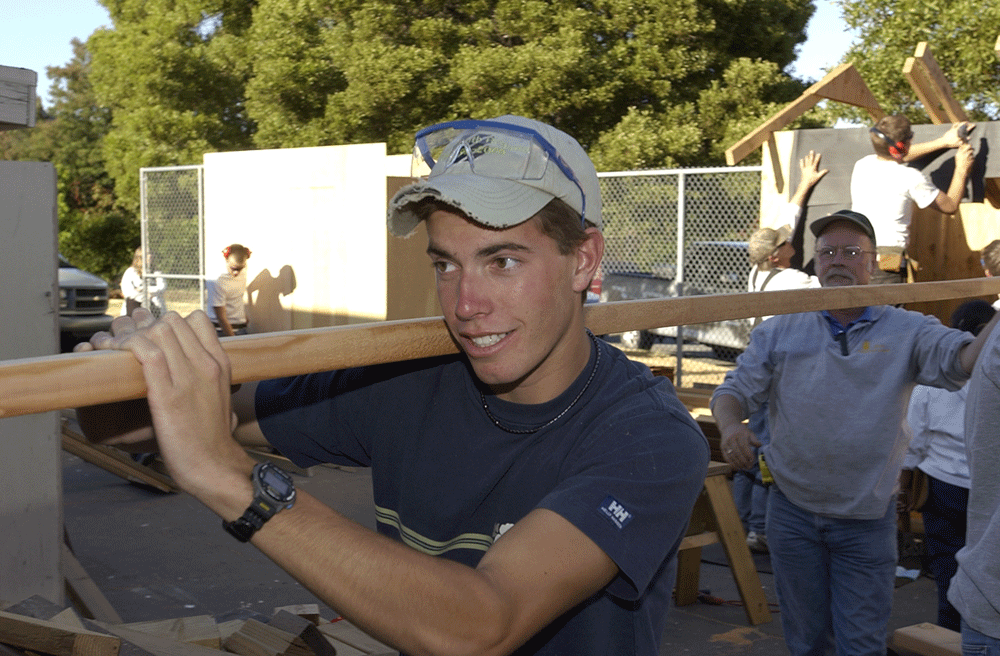
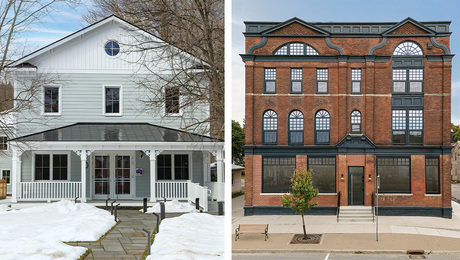






















View Comments
Fantastic article!
My husband and I own a residential design-build firm. He took shop class when in high-school (20 years ago) and began working with a contractor when he was 14. I have a degree in architecture and provide our design services. Yearly we are faced with high-school students wanting summer jobs. Few have performed well to say the least. Sadly these kids usually come to us with a "Certificate of Carpentry" in hand yet they don't even know what the crown of a board is.
A few years ago they discontinued shop class at our local high-school and while building trades are still offered as an elective; if a student wants to take such they have to be shipped to a school many miles away (this is the same school handing out the certificates to students who do not know what crown means).
In addition to the lack of quality training, the building trades industry is often misconceived as being comprised of people who go into the profession because they are not smart enough to do anything else or are a bunch of misfits. Of course, that is a whole other article.
Ray and I have talked for at least 5 years about starting some sort of training workshop for local kids. That spark has been reignited by your article. Thank you! I am printing it as I type and sharing it with him this evening.
Hats off to you for taking a giant leap and making it work!